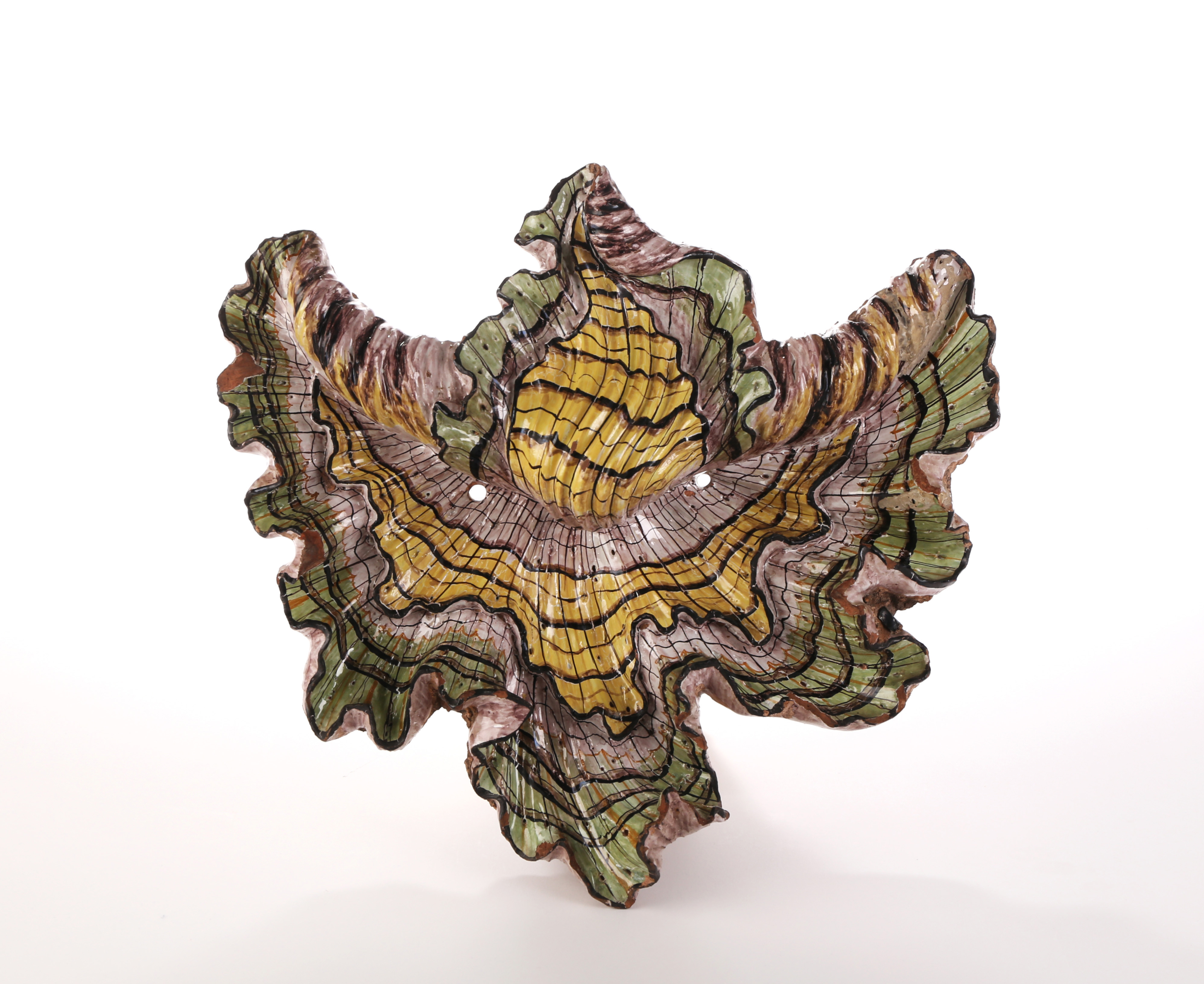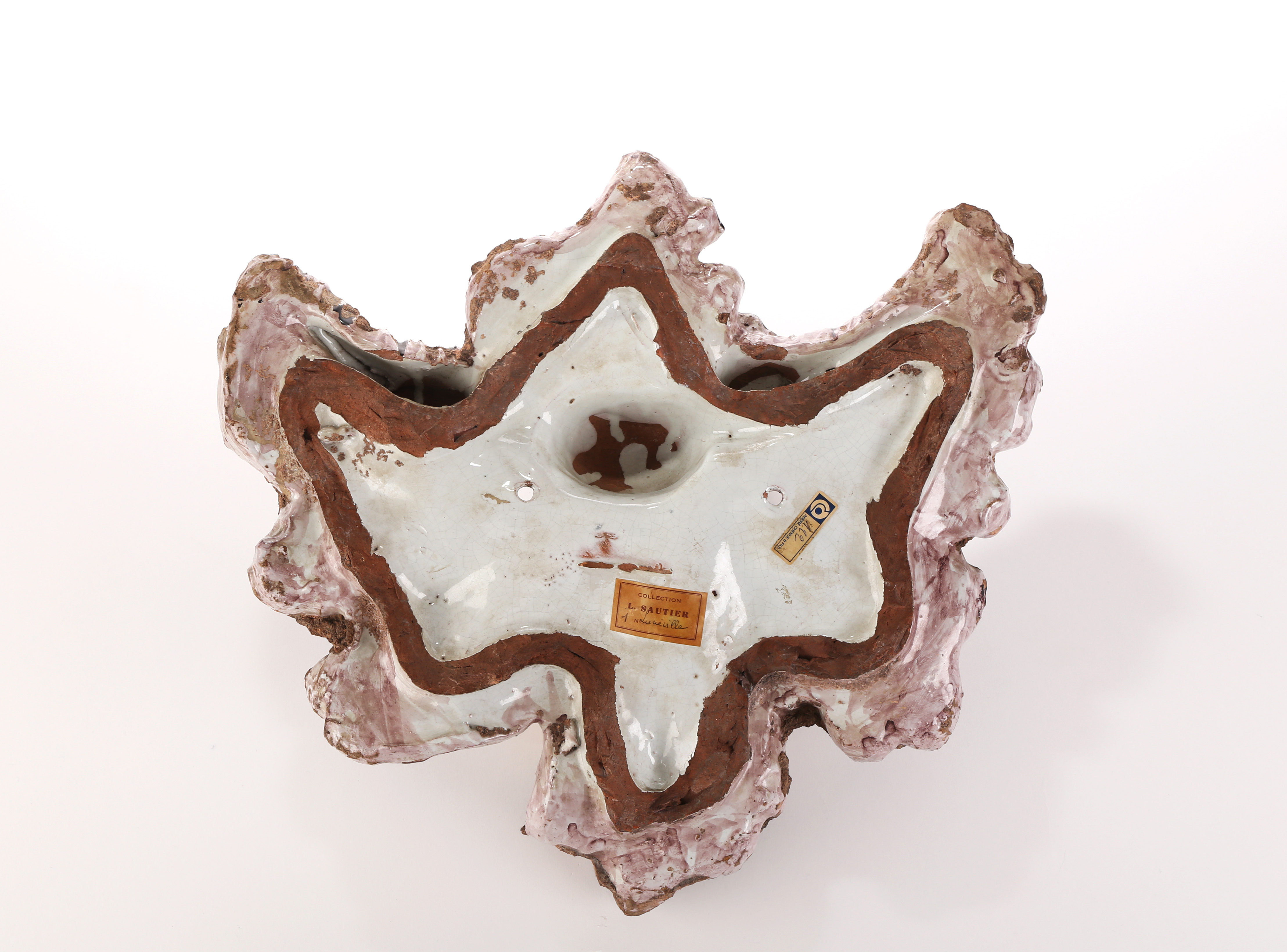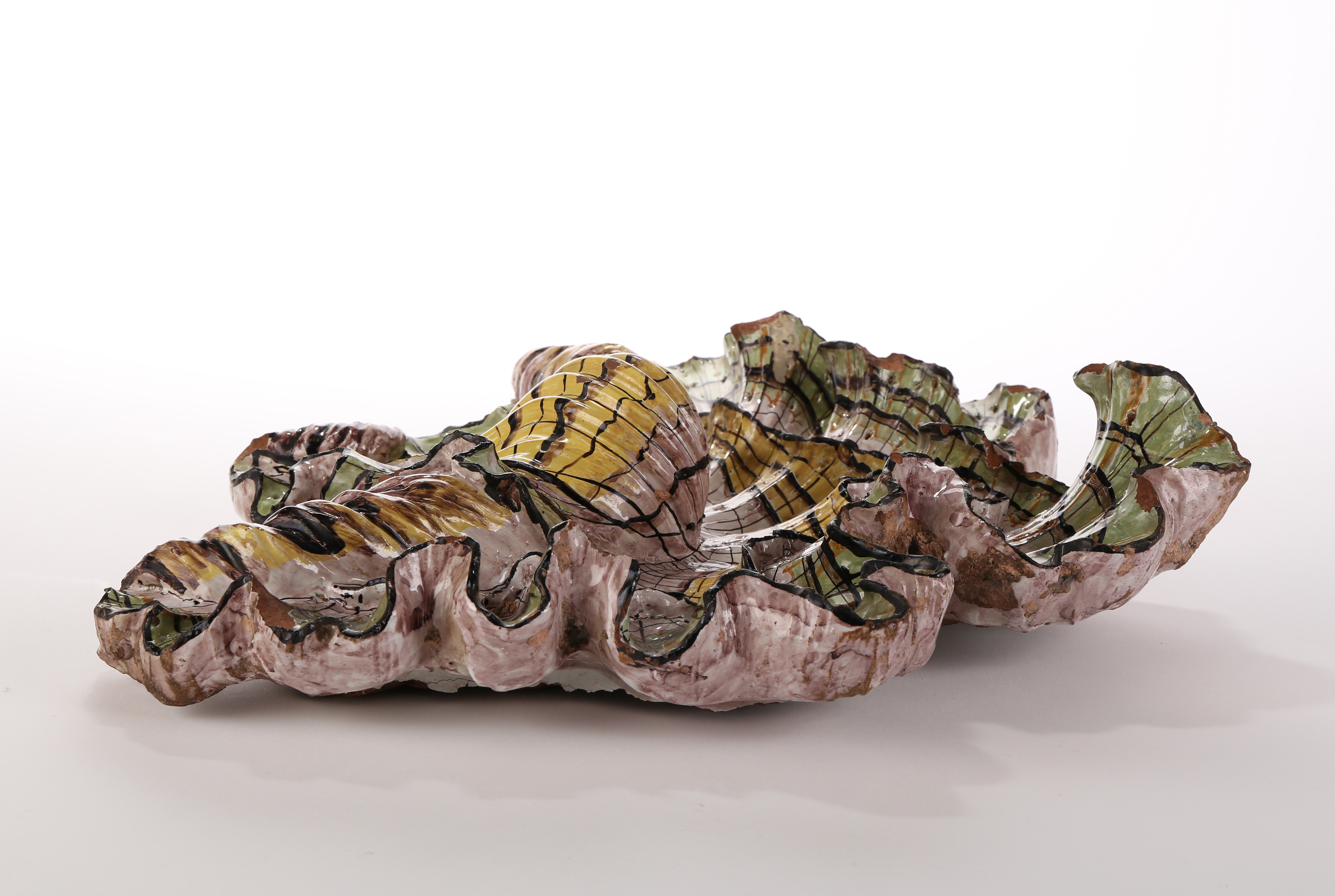Made as a decorative element to be set into a wall, with accretions of mortar and a piece of glass still remaining from where it was removed. The only other related pieces are two very similar faience shells are in the museum at Sèvres – Cité de la Céramique which were both acquired in 1891 (9088 1-2).
It has been suggested that these three extravagantly rococo pieces, may be connected to the ornamental plans of Stanislas Leszczynski, the exiled King of Poland in Lorraine. The architect Emmanuel Héré published in 1752 a “Recueil des plans, élévations et coupes, tant géométriques qu’en perspectives, des chateaux, jardins et dépendances que le roy de Pologne occupe en Lorraine…”, which illustrate interior views of pavilions built on order of the monarch. The Kiosk in the Parc des Bosquets at Luneville is of particular note as it was decorated with faience elements such as sheep, shepherds, waterfowl, conches and shells.
The attribution of these shells has shifted between different factories in Lorraine: Niderviller, Luneville and Saint Clement. Mme Antoinette Faÿ-Hallé considers the correct attribution to be Luneville, linking them in terms of usage to a pair of garden vases illustrated in Céramique Lorraine, Chefs d’oeuvre des XVII & XIX siècles, Nancy, 1990, (no. 4, p.52) and in terms of colouring to the base of the model of the court dwarf Bébé in the same book (p.21).
Condition:
Losses to extremities, no restoration
This item has been sold



